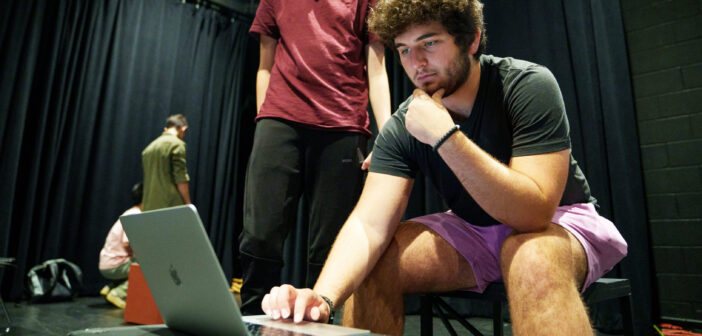The rapid evolution of artificial intelligence, commonly referred to as “AI,” has infiltrated college curriculums and students’ classes, with many Lehigh professors adjusting their teaching methods and syllabi in response.
AI’s efficiency is leading to enhanced productivity that will have a profound effect on the future of education and employment. Marketing, business, computer science and journalism majors are among the most prominently impacted.
Emily Gobreski, a professor of business communications, incorporates AI into her students’ assignments.
She said her curriculum includes drafting emails and creating a resume, for which she now allows students to use AI as a tool.
The AI resume checker and AI “Big Interview” are two specific tools she is a proponent of. She said the interview tool grades students based on how many times they use the words “like” or “um,” their speaking rate and whether their responses fit the interview questions.
“(AI is) almost a double-edged sword,” Gobreski said. “It’s a very powerful tool.”
Gobreski said she was never resistant to AI and now sees it like a calculator.
“In elementary school, you have to know how to add, subtract and divide to work a calculator and trust its output,” Gobreski said. “I believe it’s the same with business communication writing. You learn the basics and then one day can use AI as a resourceful tool for assistance.”
Kylie Hogan, ‘27, a marketing major, is a student in Gobreski’s class that uses the AI “Big Interview” technology.
She said the integration of AI into her academic curriculum has enhanced her readiness for the marketing field.
“The insights for AI feedback allow us to present our strongest profiles as we embark on our job search journey,” Hogan said.
In addition to courses within the business school, the journalism department has also seen a rise in the use of AI.
While some professors have used AI as a tool in the classroom, others remain concerned with its use in the field.
John Vilanova, a journalism and communications professor, said he is concerned with AI’s accuracy, as its responses can sometimes be patently false.
“You have these technologies that we like to think are going to be neutral and not going to have hidden opinions, hidden biases, but the reality is that they are very much informed by the world that made them and the profit and motives around them,” Vilanova said.
He said AI’s current technology is fact-based and impersonal, putting itself and reporting in separate ballparks.
Vilanova said there will come a time when AI can lead interviews, but he is unsure how the technology will compete with a human reporter.
“Will it get to know me? How good will it be at following up questions (or) respecting me?” Vilanova said. “I wouldn’t want to tell a robot my life experiences.”
Vilanova said he believes AI can never replace the significance of speaking to real people.
“(AI) can’t give you the feeling of what it was like to have been in the room,” Vilanova said. “It can’t give you the sort of human experience of going and talking to someone about what participating in (a specific) event was like.”
He said ChatGPT is damaging in the journalism classroom because students should be doing their own writing and developing their own style.
Getting the perfect grade, he said, should be of lesser concern than journalistic style development.
“I’m definitely a little disheartened, because I think despite all the ways that I’ve been trying to remake things, (ChatGPT) is still being abused at a rate that I’m not comfortable with,” Vilanova said.
In another academic sphere, computer science majors are learning how to write and interpret code. However, AI is not yet capable of solving coding errors for them.
Brian Davison, a computer science and engineering professor, said despite AI’s abilities to program and code, students are tested on their understanding of what the code is saying.
Davison said other computer science courses use AI as a “tutor” to answer complex questions.
Students can describe a problem and ask an AI chatbot to either tell them how to address the problem or to design a particular solution, he explained. The chatbot then comments on whether the answer is acceptable or whether it’s still missing something.
“The system might not be 100% correct, but it does a good job in teaching or tutoring someone in a topic, and it’s a great way to utilize it,” Davison said.
Edmond Sarkissian, ‘27, is majoring in computer science and business and said he sees AI used often in the classroom.
He said he has seen many students use AI to cheat on assignments and get them done quicker.
Despite this, he said he views AI as a positive development overall, and his resistance to it has lessened with the advancements the technology has made in recent years.
He said he plans to study artificial intelligence more in the future.
“AI has proven helpful in education, and I think AI will continue to benefit my major in the following years,” Sarkissian said.






Comment policy
Comments posted to The Brown and White website are reviewed by a moderator before being approved. Incendiary speech or harassing language, including comments targeted at individuals, may be deemed unacceptable and not published. Spam and other soliciting will also be declined.
The Brown and White also reserves the right to not publish entirely anonymous comments.